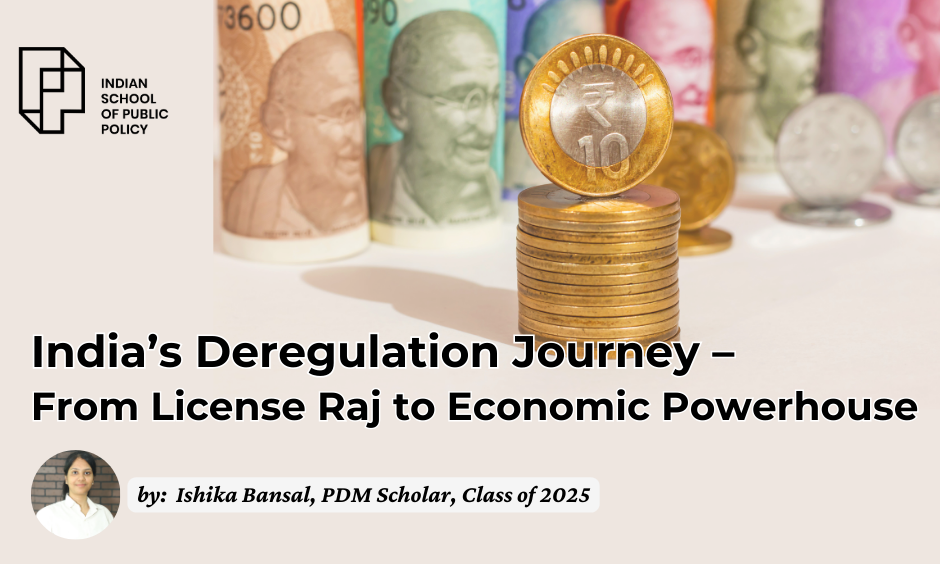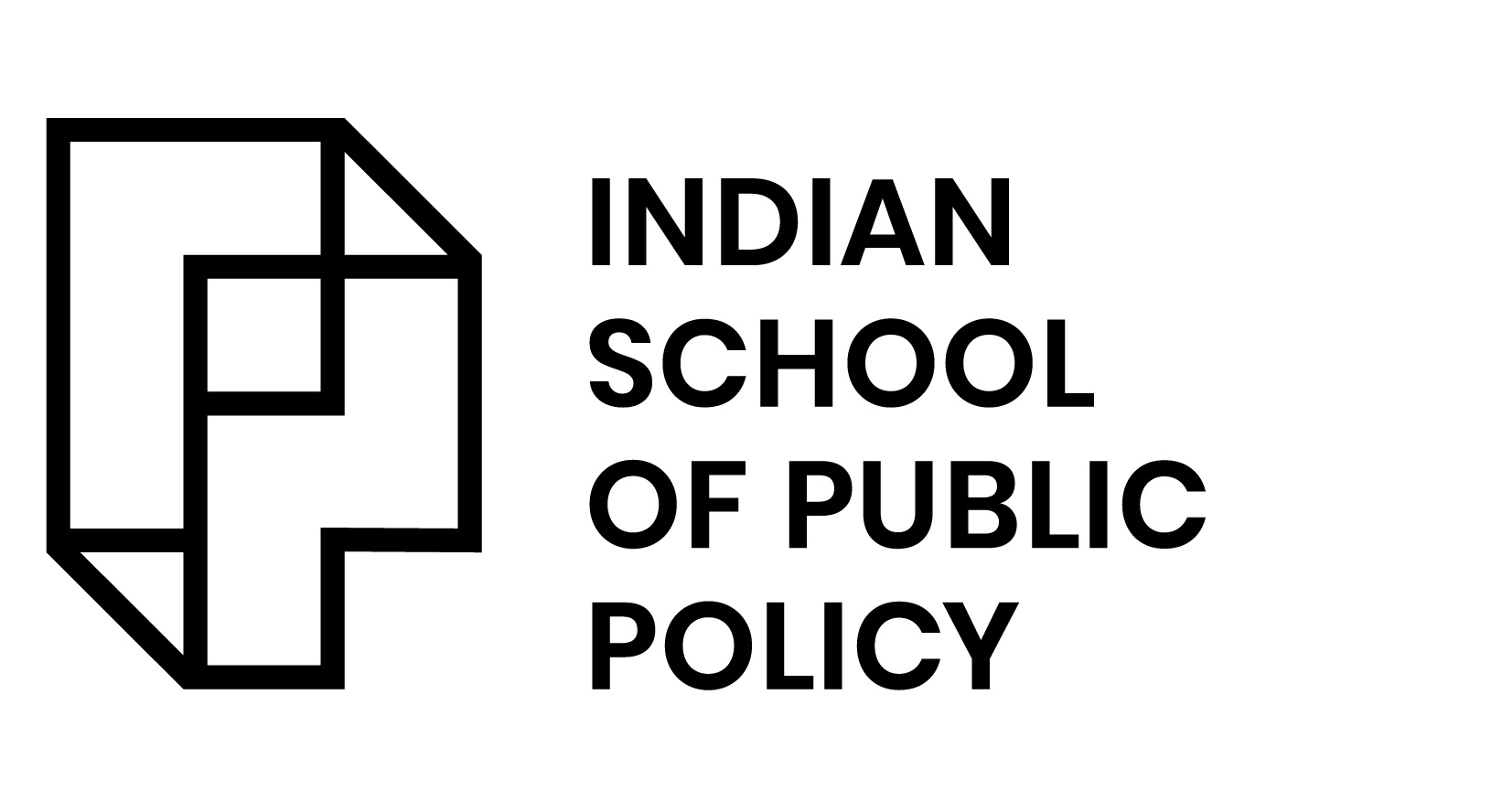
India’s Deregulation Journey – From License Raj to Economic Powerhouse

Did you know that India had only two market-dominant car models (Ambassador and Premier Padmini) during the 1980s?
For decades after independence, India followed the system of License Raj, which operated in a network of controls and state-imposed market forces. India’s GDP growth was merely 3.5%, falling below other economies of Asia. The country was on the verge of bankruptcy in 1991, with shrinking foreign reserves, record-high inflation, and subdued industrial output. The crisis compelled India to face the shortcomings of its economic model and turn to foreign institutions for assistance. Today, it’s the world’s fastest-growing economy. What happened?
The 1991 economic reforms initiated by Dr Manmohan Singh were a watershed moment in Indian history. The changeover in the country’s gradual growth with the introduction of deregulation reforms becomes an economic growth driver. The Indian government dismantled the restrictive License Raj through the Liberalization, Privatization, and Globalization (LPG) reforms, abolishing industrial licensing and shifting focus towards foreign direct investments. The transformation culminated in milestones such as the privatization of Air India and the launch of India’s first private space launch by 2022, symbolizing the country’s transition into a robust, market-driven economy characterized by economic freedom and innovation. India experienced explosive competition and innovation growth over the next two decades, with the advent of private players such as Airtel and Reliance. The economic gains, however, remained uneven, with big companies taking advantage of small enterprises and workers.
With the establishment of the Narendra Modi government in 2014, the context was altered, and comprehensive economic reforms were introduced. The historic Goods and Service Tax 2017 brought in an integrated and harmonized tax compliance system for firms. The Insolvency and Bankruptcy Code (IBC) of 2016 improved the confidence of investors to make investments within the nation. The deregulation of telecommunications and fintech has led to a transition from 5G technology to digital banking solutions. The sale of public sector undertakings (PSUs) such as Air India and proposed disinvestments in LIC and BPCL to private operators were major components of the drive for privatization. Moreover, digital initiatives such as Aadhaar and UPI minimized bureaucratic bottlenecks, and production-linked incentives (PLI) schemes attracted global manufacturers in electronics and renewable energy.
Yet, after COVID-19, India had to contend with contentious farm laws to deregulate agriculture, which were withdrawn following huge protests in Punjab and Haryana. The pandemic accelerated the shift from formal to informal employment, leaving 2 billion individuals without job security and benefits. Companies prioritized cost-cutting by favoring contractual workers over permanent employees, which undermined long-term growth by reducing workers’ purchasing power and limiting their financial stability. For instance, Lakshadweep is the most unemployed state in India, with 36.2%, due to geographical remoteness and poor economic diversification (PLFS,2024). The quick deregulation reforms and empowerment in the hands of private players raise doubts regarding the security of job wages and unemployment. Although privatization enhanced efficiency in specific sectors, critics claimed it benefited large corporations at the expense of public welfare.
India’s economy is at a defining moment, prompting deregulation reforms at an accelerating speed. Dr. V. Anantha Nageswaran, Chief Economic Advisor (CEA), says that the Economic Survey of 2024-25 focuses fervently on deregulation. The survey delves into big issues, such as the role of MSMEs, human capital building, and structural reforms required to maintain long-term growth. With the vision to be a self-reliant nation, de-globalization times call for domestic deregulation. As per Reserve Bank of India figures, the value of new imports in trade has risen from $450.2 billion in 2014-15 to $854.80 billion in 2023-24. India plans to drive investment rates from 31% GDP to 35% GDP and seeks to develop a ‘viable Mittelstand’ (German-style model of medium-sized firms) framework through Small and Economic enterprises (MSMEs).
Aggressive deregulation is a glaring contradiction to the increased foreign direct investment (FDI) of $70.9 billion in FY23 with structural issues. For example, startups such as Agnikul and Skyroot in the space industry raised $126 million in funding to deploy satellites, according to Tracxn’s Space Tech Geo Report 2024. The defence production increased by 20% following FDI caps through Tata-Airbus’s ₹22,000 crores military helicopter contract. Yet, the labour market is polarized: while urban unemployment rates are 6.4% (PLFS, 2024), 85% of the workforce doesn’t have a formal contract. In the energy sector, coal mining peaked at 893.19 million tonnes in mining auctions but lagged in renewable energy projects, covering only 60% of the 2022–24 solar capacity targets. As the government accelerates the privatization of the Industrial Development Bank of India (IDBI), it must balance investor drive with economic stability, ensuring growth that is inclusive, resilient, and future-ready.
India’s deregulation experience has transformed the economy from a stifling License Raj to an economic giant, increasing competition, innovation, and consumer choice. India has made significant strides in aerospace, establishing itself as a global investment hub. However, the benefits of deregulation and macroeconomic success often fail to reach small businesses and farmers, highlighting a persistent irony in its economic reforms. While advancements like private space launches showcase India’s progress, setbacks in retail reforms emphasize the challenges of ensuring that growth trickles down to the grassroots level. The disconnect underscores the need for policies that balance innovation and inclusivity to achieve holistic development.
The need of the hour? Public-private partnerships are an important mechanism to bridge the gap between inclusive growth and policy. The state needs to simplify reforms in laggaed sectors such as retail and labor as businesses invest in scalable and fair solutions. The question is no longer whether India can deregulate but whether India can democratize its success. India can shift from selective liberalization to institutionalized economic freedom in the next few decades.
References:
1. Government of India, Ministry of Statistics and Programme Implementation, & National Sample Survey Office. (2024). ANNUAL REPORT, PLFS, 2023-24 https://www.mospi.gov.in/sites/default/files/publication_reports/AnnualReport_PLFS2023-24L2.pdf
2. India’s sector shows resilience amidst geopolitical headwinds. (n.d.). https://pib.gov.in/PressReleseDetailm.aspx?PRID=2034949®=3&lang=1
3. India Strategic Staff/ Agency. (2024, July 31). India’s Spacetech Startups Secure $126 Million in Funding in 2023, A 235% Spike in 2 years. https://www.indiastrategic.in/indias-spacetech-startups-secure-126-million-funding-in-2023-a-235-spike-in-2-years/
Register your Interest to Study at ISPP

Ishika Bansal
PDM Scholar, Class of 2025
Ishika Bansal completed her graduation in Political Science and has professional experience at a start-up company named Addonlife Organics LLP. She is inquisitive and dedicated to honing her research, design, and management skills to make a positive impact on society. Her passion for public policy is driven by a commitment to sustainable practices and innovative solutions for real-world problems. She aims to develop and implement impactful policies that foster sustainable development and social justice. Ishika’s analytical skills, ethical leadership, and dedication to societal betterment will significantly contribute to the field of public policy.
LinkedIn: https://www.linkedin.com/in/ishika-bansal-3a03a9202/


